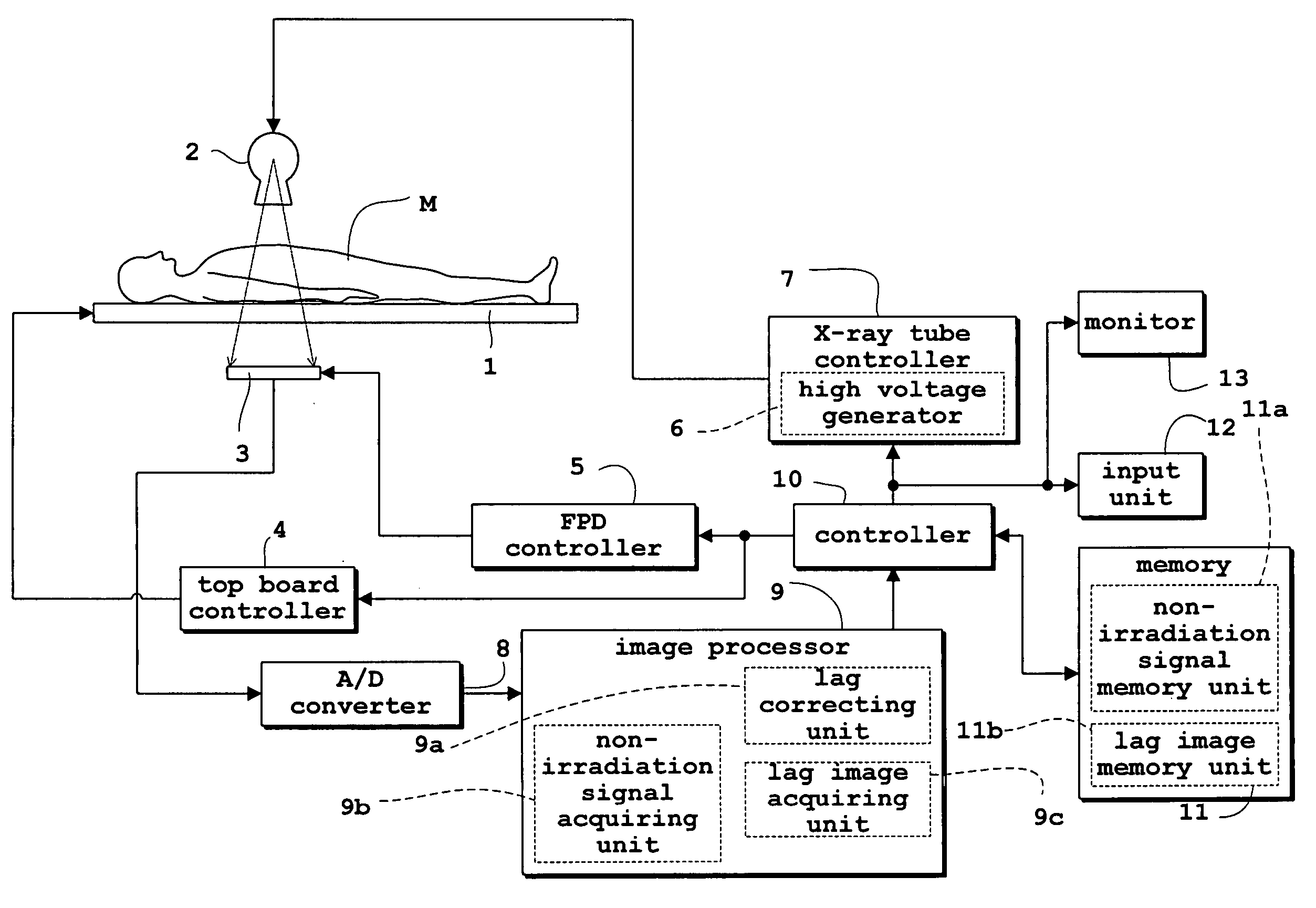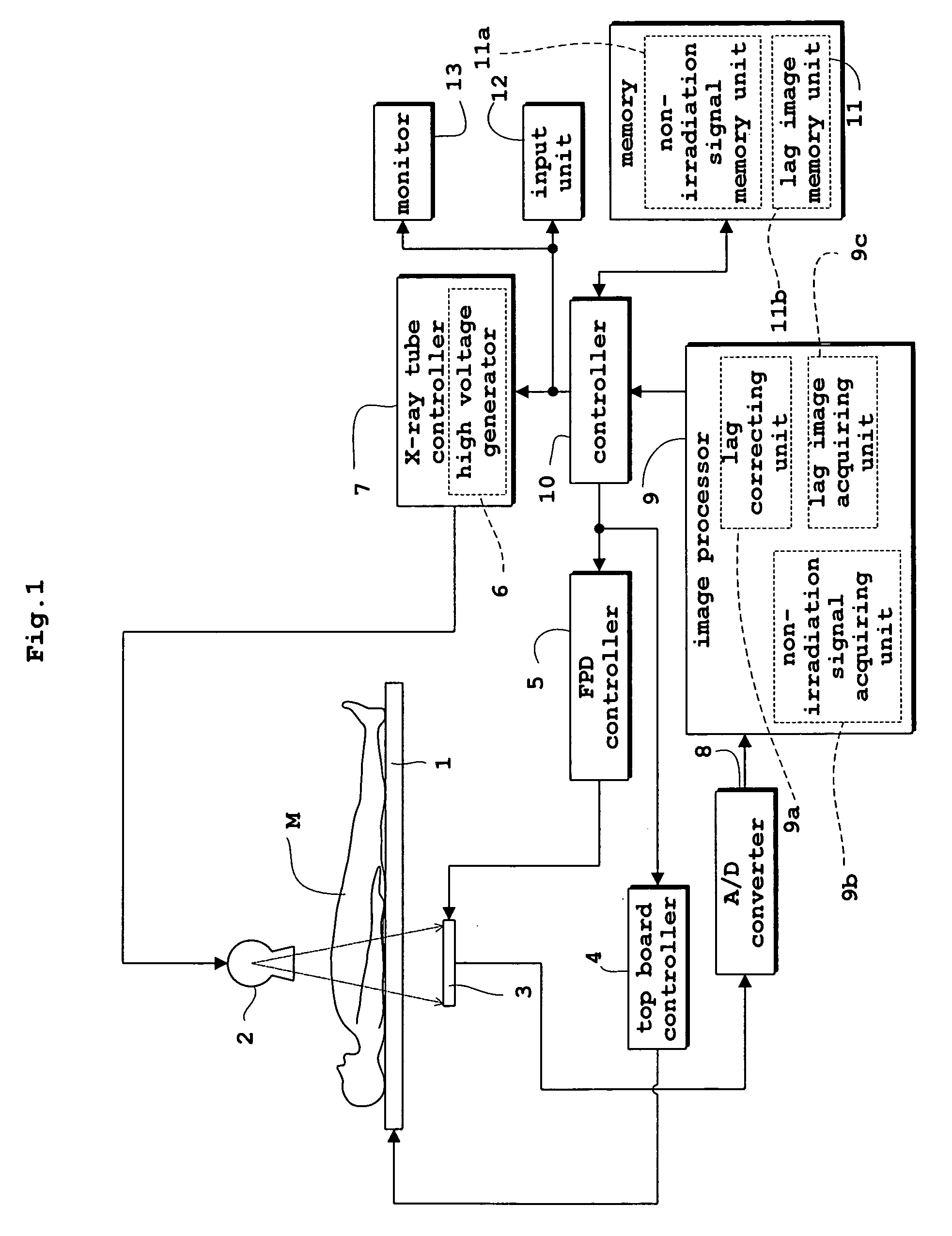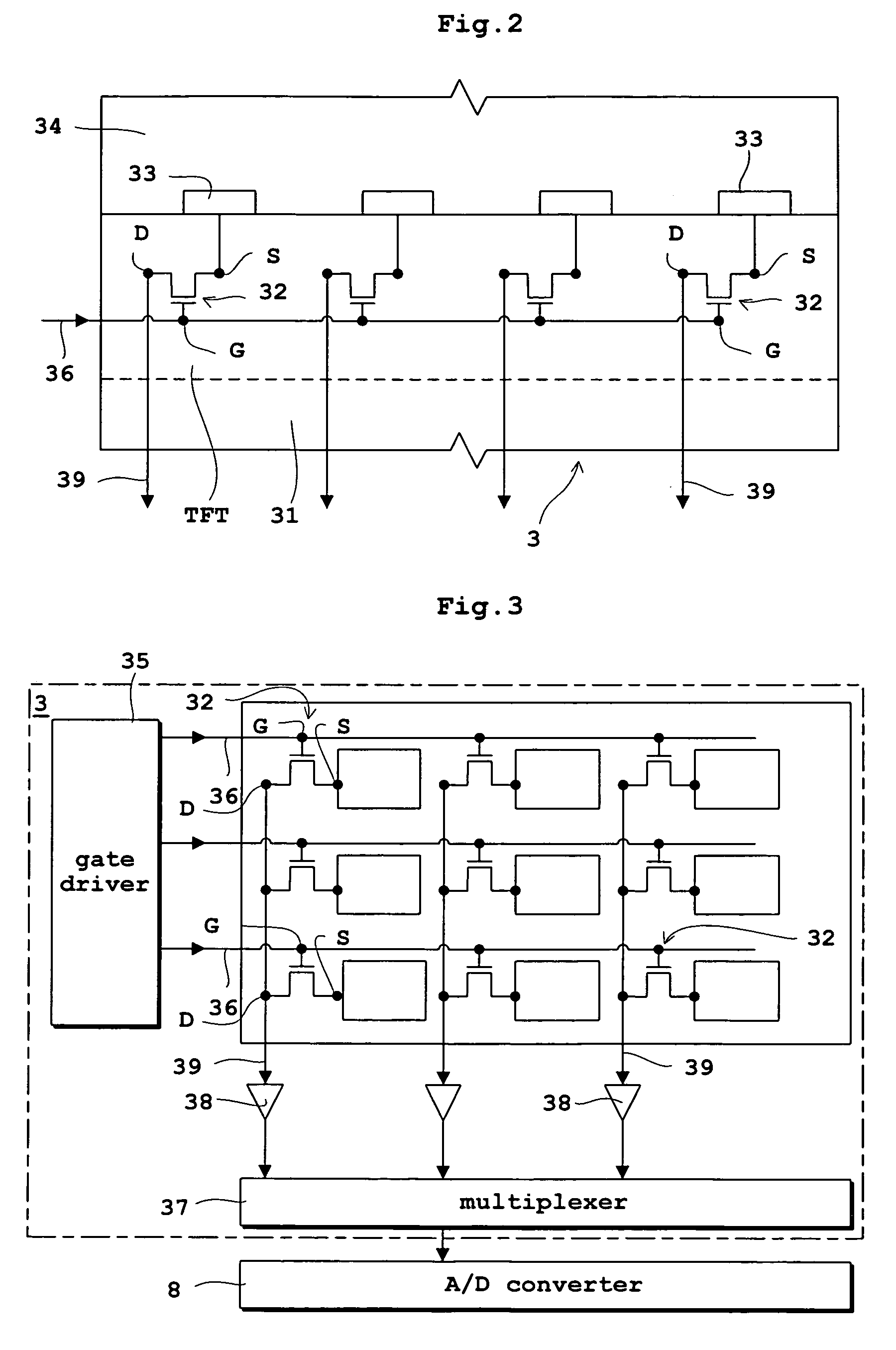Radiographic apparatus and radiation detection signal processing method
- Summary
- Abstract
- Description
- Claims
- Application Information
AI Technical Summary
Benefits of technology
Problems solved by technology
Method used
Image
Examples
first embodiment
[0043]FIG. 1 is a block diagram of a fluoroscopic apparatus in the first embodiment. FIG. 2 is an equivalent circuit, seen in side view, of a flat panel X-ray detector used in the fluoroscopic apparatus. FIG. 3 is an equivalent circuit, seen in plan view, of the flat panel X-ray detector. The first embodiment, and also the second and third embodiments to follow, will be described, taking the flat panel X-ray detector (hereinafter called “FPD” as appropriate) as an example of radiation detection device, and the fluoroscopic apparatus as an example of radiographic apparatus.
[0044] As shown in FIG. 1, the fluoroscopic apparatus in the first embodiment includes a top board 1 for supporting a patient M, an X-ray tube 2 for emitting X rays toward the patient M, and an FPD 3 for detecting X rays transmitted through the patient M. The X-ray tube 2 corresponds to the radiation emitting device in this invention. The FPD 3 corresponds to the radiation detecting device in this invention.
[0045...
second embodiment
[0077] Next, the second embodiment of this invention will be described with reference to the drawings.
[0078] Like reference signs will be used to identify like parts which are the same as in the first embodiment and will not be described again. A fluoroscopic apparatus in the second embodiment is similar to the apparatus in the first embodiment, and only the series of signal processing by the lag correcting unit 9a, non-irradiation signal acquiring unit 9b and lag image acquiring unit 9c is different from that in the first embodiment.
[0079] The series of signal processing by the lag correcting unit 9a, non-irradiation signal acquiring unit 9b and lag image acquiring unit 9c in the second embodiment will be described with reference to the flow chart of FIG. 7. Like numerals are affixed to like steps in the first embodiment and will not be described again.
[0080] (Step S1) Waiting Time Elapsed?
[0081] As in the first embodiment, a checking is made whether or not the waiting time TW h...
third embodiment
[0093] Next, the third embodiment of this invention will be described with reference to the drawings.
[0094]FIG. 8 is a schematic view showing flows of data to and from an image processor and a memory in the third embodiment. Like reference signs will be used to identify like parts which are the same as in the first and second embodiments, and will not be described again. A fluoroscopic apparatus in the third embodiment is the same as the apparatus in the first and embodiments, except the flows of data to and from the image processor 9 and memory 11 shown in FIG. 8. The series of signal processing by the lag correcting unit 9a, non-irradiation signal acquiring unit 9b and lag image acquiring unit 9c also is different from those in the first and second embodiments.
[0095] In the third embodiment, as shown in FIG. 8, the lag image acquiring unit 9c acquires a lag image by recursive computation based on the X-ray detection signals in time of non-irradiation read from the non-irradiatio...
PUM
 Login to View More
Login to View More Abstract
Description
Claims
Application Information
 Login to View More
Login to View More - R&D
- Intellectual Property
- Life Sciences
- Materials
- Tech Scout
- Unparalleled Data Quality
- Higher Quality Content
- 60% Fewer Hallucinations
Browse by: Latest US Patents, China's latest patents, Technical Efficacy Thesaurus, Application Domain, Technology Topic, Popular Technical Reports.
© 2025 PatSnap. All rights reserved.Legal|Privacy policy|Modern Slavery Act Transparency Statement|Sitemap|About US| Contact US: help@patsnap.com



